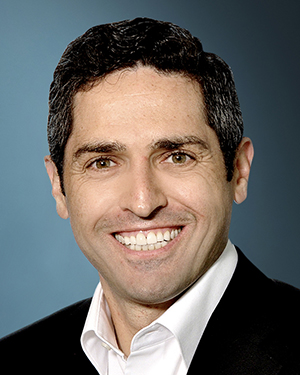In recent months, CBRE Investment Management (CBREIM) has made two high profile personnel announcements for its private infrastructure strategies team, naming Aaron Vale as head of infrastructure client solutions and Nathalie Viens as managing director and head of asset management. Earlier this year it also formed a joint venture with Accelerate Investment Partnership to invest in ground leases under critical, digital and green economy infrastructure assets.
For its part, CBREIM says it is responding to the increased interest from investors in private infrastructure opportunities as well as capitalizing on the fact that increasingly governments are using public/private partnerships. There has been steady growth in annual private investment in infrastructure. CBRE is building up its team that focuses on the asset class.
According to a World Bank report, private investment accounted for $91.7 billion across 263 projects globally in 2022 alone.
WMRE spoke with Vale to get a sense of the opportunities in the infrastructure space and how CBREIM plans to capitalize.
This interview has been edited for style, length and clarity.
WMRE: First off, when we’re talking about infrastructure, what kinds of assets does that entail for private investor involvement?
 Aaron Vale: It’s all essential services that cities, states and countries rely upon. For example, the analogy is if the stock market drops 50%, what doesn’t change are things like electricity needs, the needs for water and heating, increasingly for digital connectivity and for efficient and well-functioning transportation networks. Those are the bedrock for infrastructure services.
Aaron Vale: It’s all essential services that cities, states and countries rely upon. For example, the analogy is if the stock market drops 50%, what doesn’t change are things like electricity needs, the needs for water and heating, increasingly for digital connectivity and for efficient and well-functioning transportation networks. Those are the bedrock for infrastructure services.
Specifically, as an asset class, infrastructure investment provides some portfolio benefits. We think of long duration assets—electricity, transportation, digitization—these are assets with lives of 10, 20, 30 years. They are hard assets. They are backed by real stuff that takes a lot of money and coordination to build, but also have government support often in the form of legislation, licensing and subsidies. And that gives them stable cashflow, whether it is through contracts or consumer demand. You have the ability to foresee a long cashflow horizon. These attributes complement traditional asset classes very well.
WMRE: And so where does CBREIM’s investment strategy fit in?
Aaron Vale: We see a great intersection between real estate and infrastructure in terms of real asset portfolios. Institutions—pensions and sovereign wealth funds across the world—are increasing allocations to real assets. Real estate and private equity are a little older than infrastructure. Really, it’s only an asset class in its current form for about the last 20 years.
We’ve also seen a confluence of real estate and infrastructure. Some examples would be putting cell towers on buildings or solar panels on a real estate footprint or heating or cooling underneath buildings or digital connectivity through real estate assets. These are great examples of the intersection through asset classes.
In good times, infrastructure performs well, but even in bad macro times it is an important driver for growth. And you think about things like the Inflation Reduction Act, energy transition, decarbonization, increasing access to renewable energy. These are some of the key pillars.
WMRE: What are the strategies for CBREIM in getting into the space?
Aaron Vale: Typically, we are investing in private businesses--companies where we are controlling or co-controlling in the shareholding or sitting on the board of directors. These private businesses can be in the U.S., Europe, Australia or elsewhere around the world. We also have a partnership model where we will be a partner investing in these businesses.
The key to all of that is private ownership. We see over multiple reporting horizon periods that private investment provides portfolio benefits.
WMRE: What form do the investments take for investors?
Aaron Vale: We invest through funds or separate accounts. The capital we raise from institutions or high-net-worth investors goes into vehicles we manage in which we are building a diversified portfolio. One example is that we’ve raised capital and invested in sustainable transportation. We’ve got businesses in Europe that are electrifying traditional hydrocarbon fleets of ferries or busses. We also have a platform in the U.S. where we are creating electric charging infrastructure for trucks in California. We take the capital we raise and invest in those business.
I also mentioned the digital opportunity set—taking capital and investing in data center companies, tower companies and fiber companies, all of which are benefiting from these megatrends we see, whether that is the cloud, streaming, the internet of things and increasing AI. These are also supported by government policy. One of the businesses in the U.S. that benefits from bipartisan funding is connecting high speed fiber to schools and communities that otherwise wouldn’t have high speed internet access.
WMRE: Can you clarify on data centers? There are some data center REITs. Is this different from those type of investments?
Aaron Vale: We have data center exposure with 10-year take-or-pay contracts with some of the best rated counterparties in the world. When you have high contracted cashflows and rates that increase with inflation, very low churn, then yes, we consider those infrastructure. The question is good one because if we were buying land to develop data centers, that would be more private equity or development real estate. Here we are looking for those key businesses with revenue stability and downside protection to make the infrastructure case.
WMRE: How much of this has been driven by existing relationships where CBREIM has been working with investors on real estate and wanting to extend that to infrastructure?
Aaron Vale: Increasingly investors are looking to concentrate some of their manager relationship to organizations they can grow with and that can provide specialized services with a focus, but who can also fulfill their sustainability needs or reporting or other kinds of expectations. We are seen as a market leader in real estate investment management. It’s a natural extension for those groups that are familiar and comfortable and working with us to learn about the interesting things we are doing on the infrastructure side. Another point is being global, because assets are unique and idiosyncratic. A data center is different in Europe than America or Australia. Tapping into local knowledge in a global organization is important. It’s not easy to be global unless you already have that established presence.
WMRE: You talked before about institutions and high-net worth. What about working with RIA and other wealth channels?
Aaron Vale. It’s small, but growing. We have a favorable outlook for that channel to grow. Historically private infrastructure and other private asset classes have been the domain of institutional investors. For infrastructure, those that have been in the space have been rewarded with cash yield, downside protection and capital appreciation supportive of these megatrends. They have put more money in the asset class because been they have been rewarded for that investment.
There have been some constraints and barriers to the smaller investor channel. But those same channels could benefit from those cashflow streams. Organizationally, we have been able to work with these channels to find homes for capital where it makes sense. And it’s important to be prudent in the long-term implementation. We are in the early innings. We need to understand how different investor profiles have implications for reporting, taxes, liquidity. Understanding how those pieces come together is something that as an industry we are making progress towards, but are no means are we where we are going to go.
WMRE: What have you been doing at CBREIM to ramp up for this opportunity?
Aaron Vale: Across our North American and Europe operations we are up to around 70 people including an investment team, client solutions and a finance team. Probably two to three years ago, we were closer to 50 people. We are growing quite well to support AUM growth and have $8 billion in private infrastructure assts. We see that growth continuing both in terms of the dollar amount invested and the team to support it with a focus on more specialization, whether that is in a market sector, in a focus like asset management or financing or new regions.
It feels like a new challenge and an opportunity. It speaks to the strategic importance and support CBRE is putting into the business. After 17 years on the investment side, I will be able to take on that new challenge to help grow our infrastructure platform and also make sure we do speak with an investor/operator mentality as we go to our existing clients and as we go to new potential clients. For me, it was a really cool opportunity with the strategic importance CBRE is putting into our business.
WMRE: Any last points to emphasize?
Aaron Vale: I would point to the growth of the asset class over the last two decades and the strategic importance in investor portfolios. Whereas prior to the Great Financial Crisis, infrastructure was growing at about $30 billion to $40 billion a year. Now we are seeing $100 billion of new capital in new funds per year. It gives rise to concerns about if there is too much money chasing deals. But quite the contrary, when we’re talking about energy transition, adapting infrastructure for climate change risk and digitalization, that requires hundreds of billions of investments. Historically this was the area of governments and some strategic firms. Now this is where the new specialist investor steps in. That’s where it is going. There’s a great return potential, high yield and great downside protection risk but also great capital returns investing in renewable, digital assets, transportation networks and adapting to the trends that we all feel and see in our everyday lives but are sometimes hard to access unless through the private infrastructure asset class.





